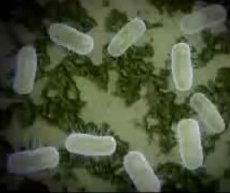Medical expert of the article
New publications
Acinetobacteria
Last reviewed: 08.07.2025

All iLive content is medically reviewed or fact checked to ensure as much factual accuracy as possible.
We have strict sourcing guidelines and only link to reputable media sites, academic research institutions and, whenever possible, medically peer reviewed studies. Note that the numbers in parentheses ([1], [2], etc.) are clickable links to these studies.
If you feel that any of our content is inaccurate, out-of-date, or otherwise questionable, please select it and press Ctrl + Enter.

The genus Acinetobacter (6 species) includes gram-negative rods, usually very short and round, their sizes in the logarithmic growth phase are 1.0-1.5 x 1.5-2.5 μm. In the stationary growth phase, they acquire mainly the form of cocci, located in pairs or in the form of short chains. Large cells of irregular shape and threads are found in small quantities in all cultures, and sometimes predominate. These bacteria do not form spores, do not have flagella, but some strains demonstrate "twitching" mobility on a dense surface. Capsules and fimbriae may or may not be present. Chemoorganotrophs with oxidative metabolism. The ability to use organic compounds as energy and carbon sources is inconstant. They do not form oxidases, they are catalase-positive. They do not form acetoin, indole and H2S. Strict aerobes, optimum growth temperature 30-32 °C, pH about 7.0. Usually resistant to penicillin. The ratio of G + C in DNA is 40-47 mol %.
Acinetobacter are free-living saprophytes, distributed worldwide. Acinetobacter are often isolated from soil, water, sewage, contaminated food products, and the mucous membranes of animals (including fish) and humans. They can cause many infectious processes, including meningitis and septicemia in humans and septicemia and abortion in animals. Their main habitats are soil and water. Pathogenicity is usually low, but they can play an important clinical role in humans and their organs with weakened natural resistance. It is also possible that more than one ecological variant of Acinetobacter exists, including parasitic or potentially pathogenic for animals and humans variants of A. calcoaceticus. The absence of oxidase is a feature by which bacteria of this genus differ from the oxidase-positive genus Moraxella, including the subgenus Branhamella.


 [
[